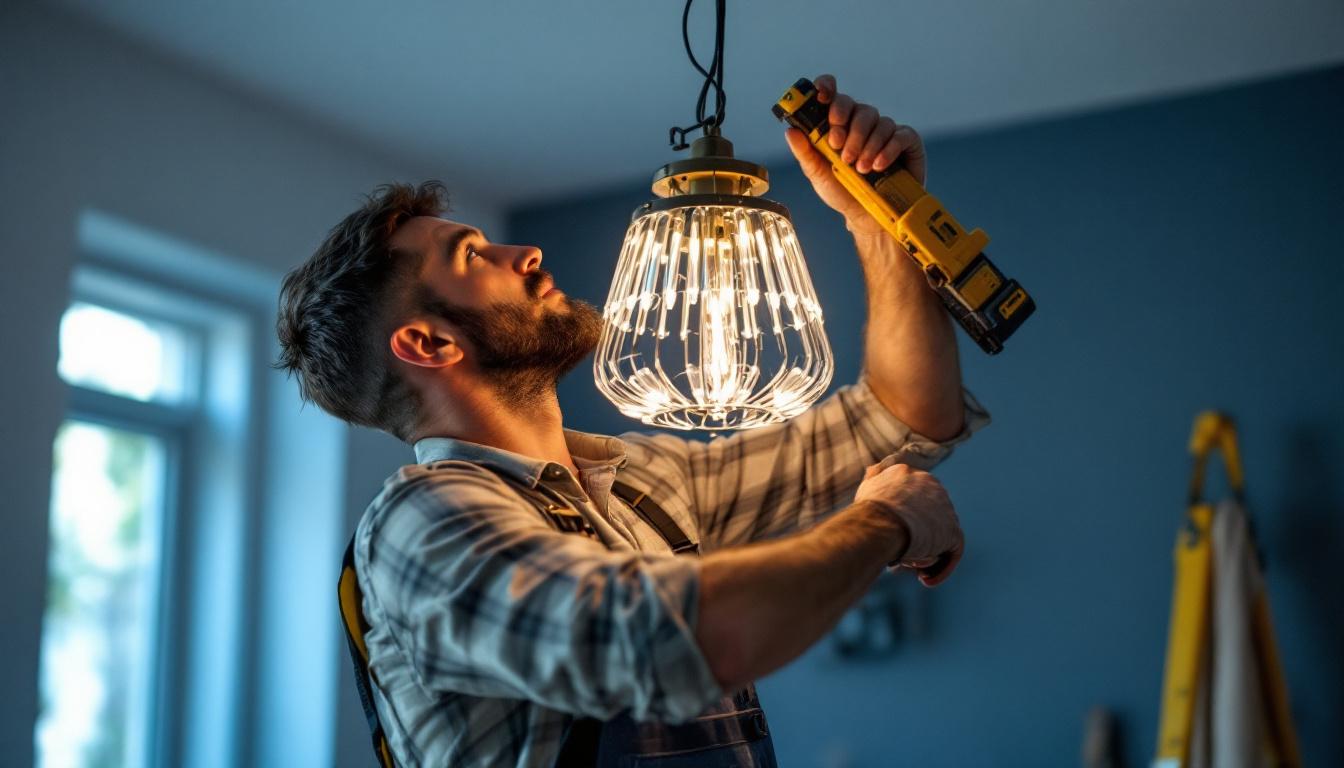
Lighting plays a crucial role in various industries, particularly in environments where hazardous materials are present. Explosion proof light fixtures are essential for ensuring safety and compliance in these settings. For lighting contractors, understanding the intricacies of these fixtures not only enhances their service offerings but also ensures the safety of their clients. This article explores top strategies that lighting contractors can implement when working with explosion proof light fixtures.
Explosion proof light fixtures are designed to contain any explosion that may occur within the fixture itself, preventing it from igniting the surrounding atmosphere. These fixtures are commonly used in industries such as oil and gas, chemical processing, and mining, where flammable gases, vapors, or dust may be present. The engineering behind these fixtures involves robust materials and intricate designs that can withstand extreme conditions, ensuring safety and reliability in hazardous environments.
Contractors must familiarize themselves with the various classifications and ratings that determine the suitability of light fixtures for specific environments. The National Electrical Code (NEC) and Underwriters Laboratories (UL) provide guidelines on the classification of hazardous locations, which is crucial for selecting the right fixtures. Understanding these guidelines not only helps in compliance but also plays a significant role in risk management, ensuring that the right safety measures are in place to protect workers and equipment.
Understanding the classification of hazardous locations is fundamental for lighting contractors. Locations are typically divided into three classes: Class I (flammable gases), Class II (combustible dust), and Class III (flammable fibers). Each class is further divided into divisions that specify the likelihood of the presence of hazardous materials. This classification system is essential for assessing the risk levels associated with different environments and for making informed decisions about lighting solutions.
For example, Class I Division 1 locations are those where ignitable concentrations of flammable gases exist under normal operating conditions. In contrast, Class I Division 2 locations may only have flammable gases present under abnormal conditions. Selecting the appropriate explosion proof light fixture requires a clear understanding of these classifications to ensure compliance and safety. Furthermore, the use of advanced technologies, such as LED lighting, is becoming increasingly popular in these settings due to their energy efficiency and lower heat output, which further reduces the risk of ignition.
Proper installation of explosion proof light fixtures is critical. Lighting contractors must adhere to the manufacturer’s guidelines and local codes to ensure that fixtures function as intended. This includes ensuring that all electrical connections are secure and that the fixtures are mounted in a manner that prevents the accumulation of dust and debris, which could compromise their integrity. Regular maintenance and inspections are also necessary to ensure that the fixtures remain in optimal working condition, as wear and tear can lead to potential hazards over time.
Additionally, contractors should consider the environmental conditions where the fixtures will be installed. Factors such as temperature, humidity, and potential exposure to corrosive materials can impact the performance and lifespan of the fixtures. Therefore, selecting fixtures that are rated for the specific environmental conditions is essential. Moreover, understanding the specific needs of the workforce and the operational demands of the facility can guide contractors in choosing fixtures that not only meet safety standards but also enhance productivity by providing adequate illumination in critical areas.
Selecting the appropriate explosion proof light fixtures involves more than just understanding classifications. Contractors must also consider the specific needs of the client and the environment in which the fixtures will be used. This section outlines key factors to consider when choosing explosion proof light fixtures.
There are various types of explosion proof light fixtures available, each designed for specific applications. For instance, LED explosion proof lights are energy-efficient and have a longer lifespan compared to traditional incandescent or fluorescent fixtures. They are ideal for environments where long-term reliability is essential.
On the other hand, high bay fixtures are suitable for areas with high ceilings, such as warehouses or manufacturing facilities. Understanding the unique requirements of each application allows contractors to recommend the most effective lighting solutions to their clients.
In today’s environmentally conscious world, energy efficiency is a significant consideration for many clients. Explosion proof LED fixtures not only provide safety but also reduce energy consumption, leading to lower operating costs. Contractors should highlight the benefits of energy-efficient lighting solutions to clients, emphasizing both cost savings and environmental impact.
Moreover, many clients are looking for sustainable options that align with their corporate responsibility goals. By offering energy-efficient explosion proof light fixtures, contractors can position themselves as leaders in sustainable lighting solutions.
Compliance with safety regulations and standards is non-negotiable in hazardous environments. Lighting contractors must ensure that the explosion proof light fixtures they recommend or install are certified by recognized organizations. This section discusses the importance of compliance and how contractors can navigate the certification process.
Certification marks, such as those from Underwriters Laboratories (UL) or the Canadian Standards Association (CSA), indicate that a product has been tested and meets specific safety standards. Contractors should be well-versed in these certification marks and what they signify for explosion proof light fixtures.
When selecting fixtures, contractors should look for products that are specifically labeled for the intended hazardous location. This ensures that the fixtures have been rigorously tested and are suitable for the environment in which they will be installed.
Maintaining thorough documentation is crucial for compliance and accountability. Lighting contractors should keep detailed records of all installations, including product specifications, certification information, and installation procedures. This documentation not only serves as a reference for future projects but also provides evidence of compliance in case of inspections or audits.
Additionally, contractors should educate clients on the importance of maintaining records of their lighting systems, including any modifications or repairs made over time. This proactive approach can help prevent safety issues and ensure ongoing compliance with regulations.
Regular maintenance of explosion proof light fixtures is essential for ensuring their longevity and effectiveness. Lighting contractors should implement a comprehensive maintenance strategy that includes routine inspections, cleaning, and timely replacements. This section outlines best practices for maintaining these critical lighting systems.
Conducting routine inspections is vital for identifying potential issues before they escalate. Contractors should establish a schedule for inspecting explosion proof light fixtures, focusing on areas such as the integrity of the fixture housing, electrical connections, and the condition of the lenses.
During inspections, contractors should also check for signs of corrosion or damage that could compromise the fixture’s explosion proof capabilities. Addressing these issues promptly can prevent costly downtime and ensure the safety of personnel in hazardous environments.
Keeping explosion proof light fixtures clean is essential for maintaining their performance. Dust and debris can accumulate on the fixtures, reducing light output and potentially leading to overheating. Contractors should recommend a cleaning schedule to clients, emphasizing the importance of using non-abrasive cleaning materials to avoid damaging the fixtures.
In addition to cleaning, contractors should also advise clients on the proper handling and storage of replacement bulbs and components. Ensuring that these items are stored in a clean, dry environment can extend their lifespan and maintain their effectiveness.
Staying informed about the latest developments in explosion proof lighting technology and regulations is crucial for lighting contractors. Ongoing training and education can enhance contractors’ expertise and improve the services they provide. This section explores the importance of continuous learning in the field of explosion proof lighting.
Participating in industry certifications and training programs can significantly enhance a contractor’s knowledge and skills. Organizations such as the National Fire Protection Association (NFPA) and the International Electrotechnical Commission (IEC) offer valuable resources and training opportunities for contractors working in hazardous environments.
By obtaining certifications, contractors can demonstrate their commitment to safety and compliance, which can be a strong selling point when attracting new clients. Additionally, these programs often provide insights into the latest technologies and best practices in explosion proof lighting.
Networking with other professionals in the industry can provide valuable insights and foster collaboration. Lighting contractors should consider joining industry associations or attending trade shows and conferences. These events offer opportunities to learn from experts, share experiences, and stay updated on emerging trends in explosion proof lighting.
Collaboration with manufacturers and suppliers can also lead to better product knowledge and access to the latest technologies. Building strong relationships within the industry can enhance a contractor’s ability to provide top-notch services to clients.
Explosion proof light fixtures are essential components in ensuring safety and compliance in hazardous environments. For lighting contractors, understanding the intricacies of these fixtures, from selection to installation and maintenance, is crucial for providing effective solutions to clients. By implementing the strategies outlined in this article, contractors can enhance their expertise, improve their service offerings, and contribute to safer work environments.
As the industry continues to evolve, staying informed about the latest technologies, regulations, and best practices will be key to success. Lighting contractors who prioritize education, compliance, and client needs will not only excel in their field but also play a vital role in promoting safety and efficiency in hazardous locations.
Ready to enhance your lighting solutions with the highest quality explosion proof fixtures? At LumenWholesale, we provide contractors with spec-grade lighting products that meet the rigorous demands of hazardous environments. Our commitment to cutting out the middleman means you get the best value without the inflated markups. With our extensive selection, free shipping on bulk orders, and a focus on quality and affordability, you can trust LumenWholesale to light up your projects with reliability and efficiency. Don’t compromise on safety or cost; explore our wholesale lighting options and elevate your service offerings today.

Discover how prong light bulbs are revolutionizing the lighting industry, offering efficiency and ease for contractors.

Discover what clients anticipate from lighting contractors when it comes to integrating solar panels with LED lights.

Discover how a chandelier hanging kit can revolutionize the workflow of lighting contractors, enhancing efficiency and precision in installations.

Discover expert insights from top lighting contractors on LED retrofit recessed can lights.